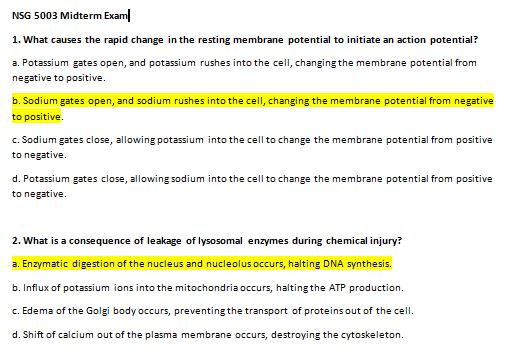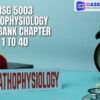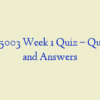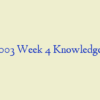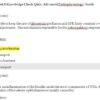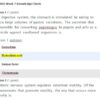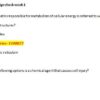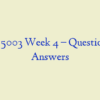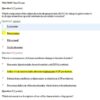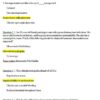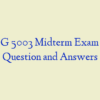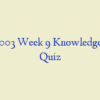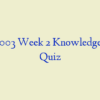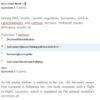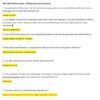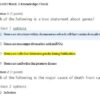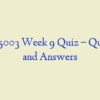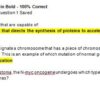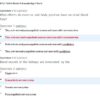Description
NSG 5003 Midterm Exam – Advanced Pathophysiology (Question with Answers)
- What causes the rapid change in the resting membrane potential to initiate an action potential?
- What is a consequence of leakage of lysosomal enzymes during chemical injury?
- In hypoxic injury, sodium enters the cell and causes swelling because:
- What mechanisms occur in the liver cells as a result of lipid accumulation?
- During an IgE-mediated hypersensitivity reaction, the degranulation of mast cells is a result of which receptor action?
- What is the mechanism that results in type II hypersensitivity reactions?
- Type III hypersensitivity reactions are a result of which of the following?
- Tissue damage caused by the deposition of circulating immune complexes containing an antibody against the host DNA is the cause of which disease?
- Why does tissue damage occurs in acute rejection after organ transplantation?
- Oncogenes are genes that are capable of:
- After the baroreceptor reflex is stimulated, the resulting impulse is transmitted from the carotid artery by which sequence of events?
- Regarding the endothelium, what is the difference between healthy vessel walls and those that promote clot formation?
- What is the expected electrocardiogram (ECG) pattern when a thrombus in a coronary artery permanently lodges in the vessel and the infarction extends through the myocardium from the endocardium to the epicardium?
- A patient reports sudden onset of severe chest pain that radiates to the back and worsens with respiratory movement and when lying down. These clinical manifestations describe:
- Respirations that are characterized by alternating periods of deep and shallow breathing are a result of which respiratory mechanism?
- Which cytokines activated in childhood asthma produce an allergic response?
- Which statement best describes cystic fibrosis?
- What are the abnormalities in cytokines found in children with cystic fibrosis (CF)?
- Examination of the throat in a child demonstrating signs and symptoms of acute epiglottitis may contribute to which life-threatening complication?
- Which statement accurately describes childhood asthma?
- Free radicals play a major role in the initiation and progression of which diseases?
- What is a consequence of plasma membrane damage to the mitochondria?
- In addition to osmosis, what force is …..in the movement of water between the plasma and interstitial fluid spaces?
- Venous obstruction is a cause of edema because of an increase in which pressure?
- At the arterial end of capillaries, fluid moves from the intravascular space into the interstitial space because the:
- Secretion of antidiuretic hormone (ADH) and the perception of thirst are stimulated by a(n):
- Some older adults have …..inflammation and wound healing because of which problem?
- Lead poisoning affects the nervous system by:
- Carbon monoxide causes tissue damage by:
- Which statement is true regarding the difference between subdural hematoma and epidural hematoma?
- What physiologic change occurs during heat exhaustion?
- Hemoprotein accumulations are a result of the excessive storage of nsg 5003 midterm exam
- Hemosiderosis is a condition that results in the excess of what substance being ….as hemosiderin in cells of many organs and tissues?
- What two types of hearing loss are …..with noise?
- What type of necrosis results from ischemia of neurons and glial cells?
- During cell injury …..by hypoxia, sodium and water move into the cell because:
- In decompression sickness, emboli are forme by bubbles of nsg 5003 midterm exam
- What is an example of compensatory hyperplasia?
- Current research has determined that chemical-induced cellular injury:
- What is the inflammatory effect of nitric oxide (NO)?
